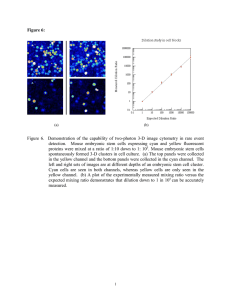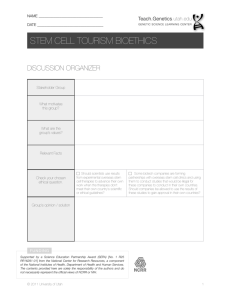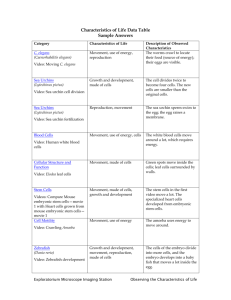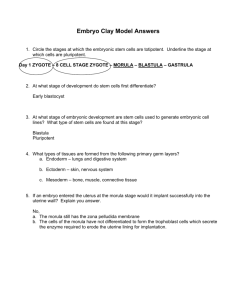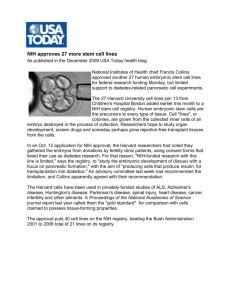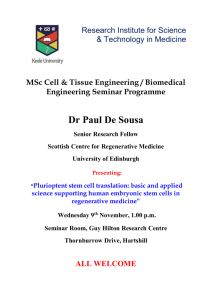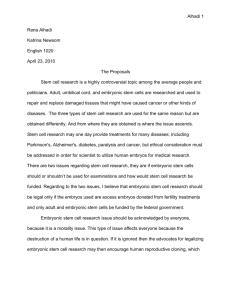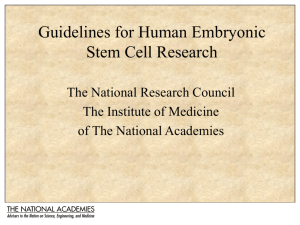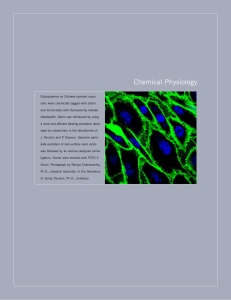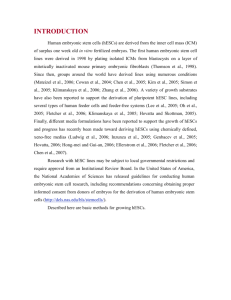Roshan Vora
advertisement
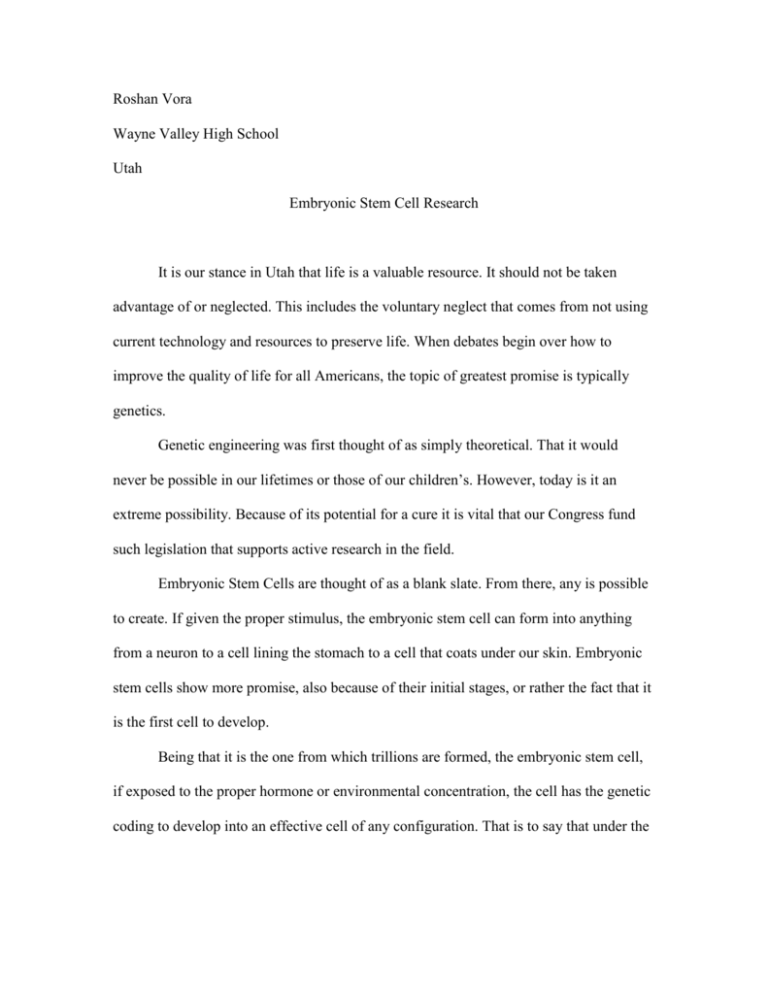
Roshan Vora Wayne Valley High School Utah Embryonic Stem Cell Research It is our stance in Utah that life is a valuable resource. It should not be taken advantage of or neglected. This includes the voluntary neglect that comes from not using current technology and resources to preserve life. When debates begin over how to improve the quality of life for all Americans, the topic of greatest promise is typically genetics. Genetic engineering was first thought of as simply theoretical. That it would never be possible in our lifetimes or those of our children’s. However, today is it an extreme possibility. Because of its potential for a cure it is vital that our Congress fund such legislation that supports active research in the field. Embryonic Stem Cells are thought of as a blank slate. From there, any is possible to create. If given the proper stimulus, the embryonic stem cell can form into anything from a neuron to a cell lining the stomach to a cell that coats under our skin. Embryonic stem cells show more promise, also because of their initial stages, or rather the fact that it is the first cell to develop. Being that it is the one from which trillions are formed, the embryonic stem cell, if exposed to the proper hormone or environmental concentration, the cell has the genetic coding to develop into an effective cell of any configuration. That is to say that under the proper conditions, be in a laboratory or artificially replicated natural environment, the cell has the potential to develop into any cell that we program it to be. The possibilities are endless for this kind of science. People paralyzed could have spinal cells rebuild and people who have failing organs can have them replaced. There would not have to be a need to worry about rejection of a donor cell because the cell that is being donated would practically be from that own person’s body, the cell would hold their DNA. Utah would also like to bring to light the fact that many of the embryonic stem cells that are on storage at facilities around the country are discarded every year because of their practice. Who is to day that embryonic stem cells can be thrown out with medical waste but not used for the progress? If these tools are discarded without regard then there should be debate on their use to save lives and improve the lives of many, otherwise considered living-dead patients. It is therefore Utah’s stance that all options be considered in the dealing of Embryonic Stem Cell Research and that the United States Congress not sideline an issue that holds the potential to save and improve the lives of millions of Americans.
